The content of the article
Cat's plague is a deadly disease of a viral nature, expressed by an extensive complex of symptoms. Cats suffer from this disease in three forms: subacute form, acute and fulminant. These forms determine the speed and duration of the disease. The medical name for plague is panleukopenia or viral enteritis. The virus that causes the disease is highly resistant to extremely low and high temperatures. In addition, standard disinfectants do not destroy it. Once in an environment that is unfavorable, the virus can function for about a year.
It is the high level of viability and resistance of the virus that determines its widespread prevalence. Despite the fact that humans and other animals cannot get viral enteritis, it is very dangerous for cats.
Symptoms and manifestations of plague in cats
Feline plague can be of three forms, which determine the duration and speed of the course of the disease, and, thereby, symptoms. The following forms are distinguished:
Lightning fast
This kind of disease is sometimes called a super acute, most often it manifests itself in kittens whose age is at least a couple of weeks. Non-large cat breeds can become ill, such as, for example, British cats, or kittens of large Maine Coons.
The sick animal experiences worsening health, the kitten stops sucking milk from the mother, pitifully and persistently peeps, during wakefulness it shows lethargy, lethargy. Even if therapy is started on time, death is most likely to occur within two days.
As soon as possible, the virus begins to infect kittens, whose body was weakened due to various reasons. A kitten can die from panleukopenia, which did not even have time to manifest characteristic symptoms.
In cats aged 3 to 7 months, the disease can have a serious effect on the central nervous system. The first manifestation of the disease is expressed in the fact that at night the kitten does not sleep, and in the daytime it hides in the dark, is afraid of noise and squeaks loudly if it is frightened by something.
Sometimes viral enteritis of this form is combined with the following manifestations:
- tremor of limbs;
- bloody vomiting or vomiting of unnatural foam;
- diarrhea accompanied by an unpleasant pungent odor;
- lack of appetite;
- low water consumption;
- cramps
- shaggy and stained wool;
- paralysis.
Acute form
Most often, this option can be found in adults. In this case, the symptoms are different from the previous option:
- The animal becomes less active, often lies apathetic, practically does not respond to the master's voice and actions.
- The cat is having difficulty breathing.
- Loses her appetite, is indifferent even to her favorite food.
- Manifestations of bloody vomiting.
- Diarrhea of a light shade, rumbling is heard in the abdomen.
- The body temperature of the cat rises to 40 degrees, after which it either becomes normal (this indicates the likelihood that the animal will recover) or drops to 37 degrees, in which case the risk of the cat's death becomes high.
- Vomiting is combined with mucus, its ductility increases.
- The pet almost stops drinking water, despite a strong sense of thirst.
- The skin in some places is strewn with red spots that fester.
When the virus reaches the respiratory system, the general picture of symptoms is diluted with the following:
- the cat often tries to clear her throat;
- there are discharge from the corners of the eyes or nostrils;
- the nose becomes hot, loses moisture, crusts;
- wheezing in the lungs is heard during breathing;
- the larynx becomes inflamed and swollen.
In addition, the described manifestations may indicate that the animal was exposed to secondary infection, which adversely affects the condition of the cat and exacerbates the course of the disease.
In cases where the plague affects the heart of the animal, the pet breathes without closing its mouth, tachycardia appears, as well as heart failure. The clinical picture lasts about 2-5 days. If the correct therapy is not prescribed in a timely manner, the cat will soon die. In the opposite situation, if the treatment has an effective effect, and the animal has not undergone secondary infection, it can recover within a week.
You should be aware that a cat that has suffered such a serious illness will for a long time begin to release the virus into the environment along with stool, urine and other fluids, so other cats that can be nearby can also become infected.
If a pet has been ill with viral enteritis, then for many years its immunity becomes resistant to the virus.
Subacute form
Plague in this case usually affects adults or mature cats that have a strong immune system, as well as animals that have been vaccinated.
This form has a lower risk, its symptomatology resembles a set of manifestations in the acute form. However, they are not so pronounced. The development of the disease is also slightly slower, the disease can last 1-3 weeks. Most often, cats that have been infected with a subacute form of enteritis recover well.
How does the virus work?
The virus, which is the causative agent of plague, is located in an environment that is associated with animals that are sick with viral enteritis at a given time, or who have been ill with them not so long ago. This environment includes saliva, urine, stool and mucus from the nose.
Infection can affect almost every cat breed, including even exotic animals.
Routes of infection may be as follows:
- Contact. In this case, the cat becomes infected by coming into direct contact with the virus carrier or body media containing the pathogen.
- Intrauterine. Infection can occur in kittens from an ill mother.
- Through people. This includes situations where the owner of the pet can bring the virus contained in shoes or clothing into the apartment. Cats that never leave the house can be infected.
- Airborne. If the pet is in the vicinity of an infected animal, there is a chance of infection through the air.
- Parasitic. On sick cats, lice, ticks or fleas can parasitize, which will then transmit the virus to a healthy individual.
Initially, the negative functioning of the virus spreads to the blood. When the plague enters the cat's body, a drop in white blood cells becomes pronounced, intoxication and acute damage to internal organs or tissues occur:
- intestinal mucosa;
- pulmonary system;
- the cardiovascular system;
- Bone marrow;
- lymphoid tissue.
When some systems of the cat's body become infected with the virus, this is manifested by severe dehydration, impaired gastrointestinal function, and heart failure.
The younger the cat, the lower the chance that she will recover well. The kitten’s body is practically not resistant to the plague - from the entire litter that was infected, about ten percent of the kittens will be able to recover. In adults, the mortality rate is relatively lower, but still reaches unpleasant limits - survival is at the level of 35-60 percent.
The death of an animal occurs due to several reasons:
- Acute loss of water in the body, lack of fluid.
- Exposure to additional infections.
- Heart failure.
With regard to risk groups, there is a minimal chance of contracting viral enteritis in those cats whose age is less than 6 years.Over time, when the animal ages, its immunity becomes less strong, the body's resistance to diseases decreases, and therefore cats whose age is more than 7 years old, often get enteritis.
The maximum risk of infection is present in kittens whose age ranges from a couple of months to a year. When a cat, bearing offspring, gets sick with a plague, kittens that are not adapted for life may appear. Often there are miscarriages, resorption of the fetus.
Disease therapy
The distemper is a deadly disease. Treatment at home is available only under the strict supervision of a veterinarian, it is necessary to strictly and strictly follow all the tips and recommendations. So that the course of the disease does not become complicated, the owner of a sick pet should not offer her any medication for her.
Note! Along with other popular methods of treating plague, treatment with vodka is extremely unacceptable. The virus that causes the disease is considered to be extremely specific, and currently there is no effective therapy against it.
The veterinarian directs all efforts to help the body of the pet in the fight against the disease, but the cat’s immune system will do the main work one way or another. Therefore, all therapy is purely symptomatic. Medicines are used that help the cat restore the water balance in the body, stop the pain syndrome and counteract the development of secondary infection.
A veterinarian doctor uses antibacterial drugs and stimulants of the immune system, in some cases it is necessary to rinse the cat's stomach and put an enema. The course of therapeutic action can last from 7 to 14 days, is determined by the severity of the disease, the age of the animal and his well-being.
The owner must follow the prescribed course exactly, even if it may seem that the cat has already recovered or has recovered. There are a number of recommendations and rules that must be followed by the owner:
- It is important to keep the animal in a warm room, which is periodically ventilated. The light in the room should be dim. When the room is ventilated, the animal should be moved to another room.
- Any discharge, stool and urine must be immediately eliminated, the eyes wiped using gauze swabs.
- The room in which the sick cat is located will need to be periodically disinfected.
- You should not force-feed the animal. When the appetite for the cat begins to return, initially it is worth treating it with meat broth, cottage cheese. After a couple of days, you can gradually supplement the diet, including low-fat meat products and sea fish. Food can be offered up to five times a day in small portions.
- Do not include cereals, herbs or various vegetables in the diet. They should be excluded from the diet for the next couple of months after the animal recovers.
Diagnostic procedures
As soon as the owner has the first suspicion that the pet is sick, the cat needs to urgently be taken to the doctor for veterinary medicine. You will also need to have a cat passport with you, where all vaccinations are noted.
The diagnosis of the disease is made on the basis of examination, analysis and anamnesis. Initially, a specialist examines feces, in which particles of the virus can be found. As a research method, the PCR method is used. However, it is important to understand that a positive outcome can be achieved if the animal was given an injection not so long ago.
It will be necessary to conduct a blood test to detect an acute drop in white blood cells.Also, the veterinarian will be required to distinguish this disease from others that are clinically similar to it: pancreatitis, leukemia, intoxication, intestinal perforation, etc.
It is worthwhile to realize that it is an emergency call to a veterinary clinic that increases the chances of a pet getting well.
How to prevent infection of a pet
Any owner of a sick cat who is not without responsibility must understand that if there are other cats in the apartment, they will need to be urgently transferred to someone for the period of therapy. In cases when during the incubation time, which is three weeks, the disease did not manifest itself, all cats will need to be vaccinated, since the virus in the room with the infected animal can persist for a year.
It is advisable to vaccinate a cat at a young age, when she is about a couple of months old, and after 3 weeks additional revaccination will be required. Cats that have reached adulthood need annual revaccination. The most commonly used medicines are the following manufacturers:
- Felocel;
- Nobivak;
- Quadric.
However, it should be remembered that only individuals who are not yet infected with viral enteritis should be vaccinated. It is important that they do not have blood-sucking parasites and helminths. Also, vaccination of excessively small animals that have not changed teeth, as well as cats bearing offspring, should be avoided.
Video: cat viral infection

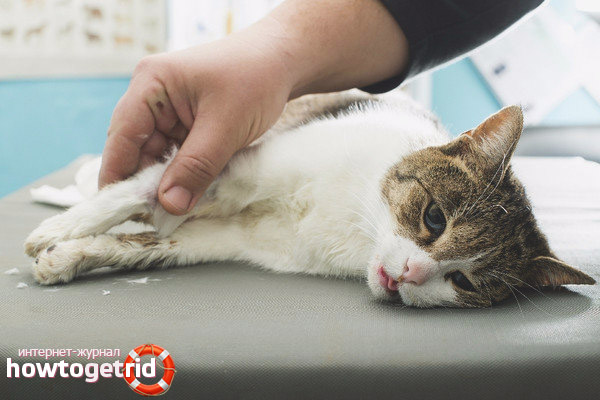
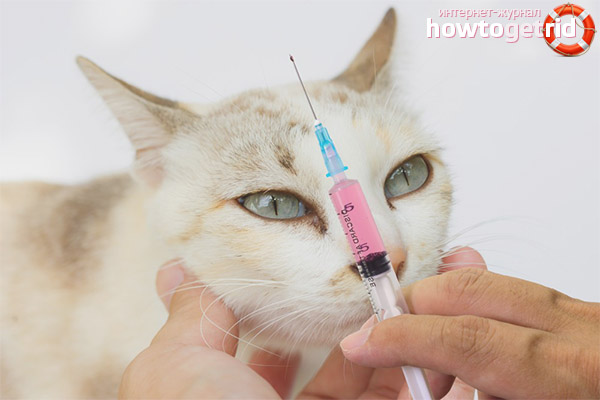




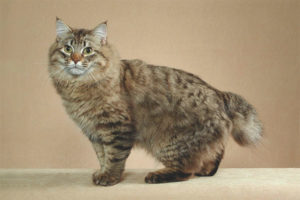
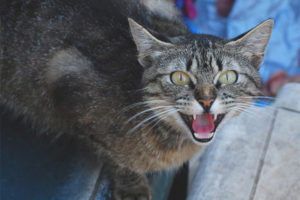
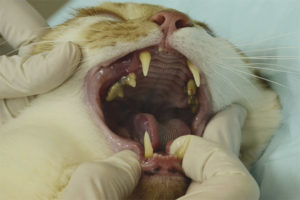
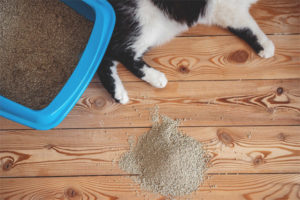
Submit